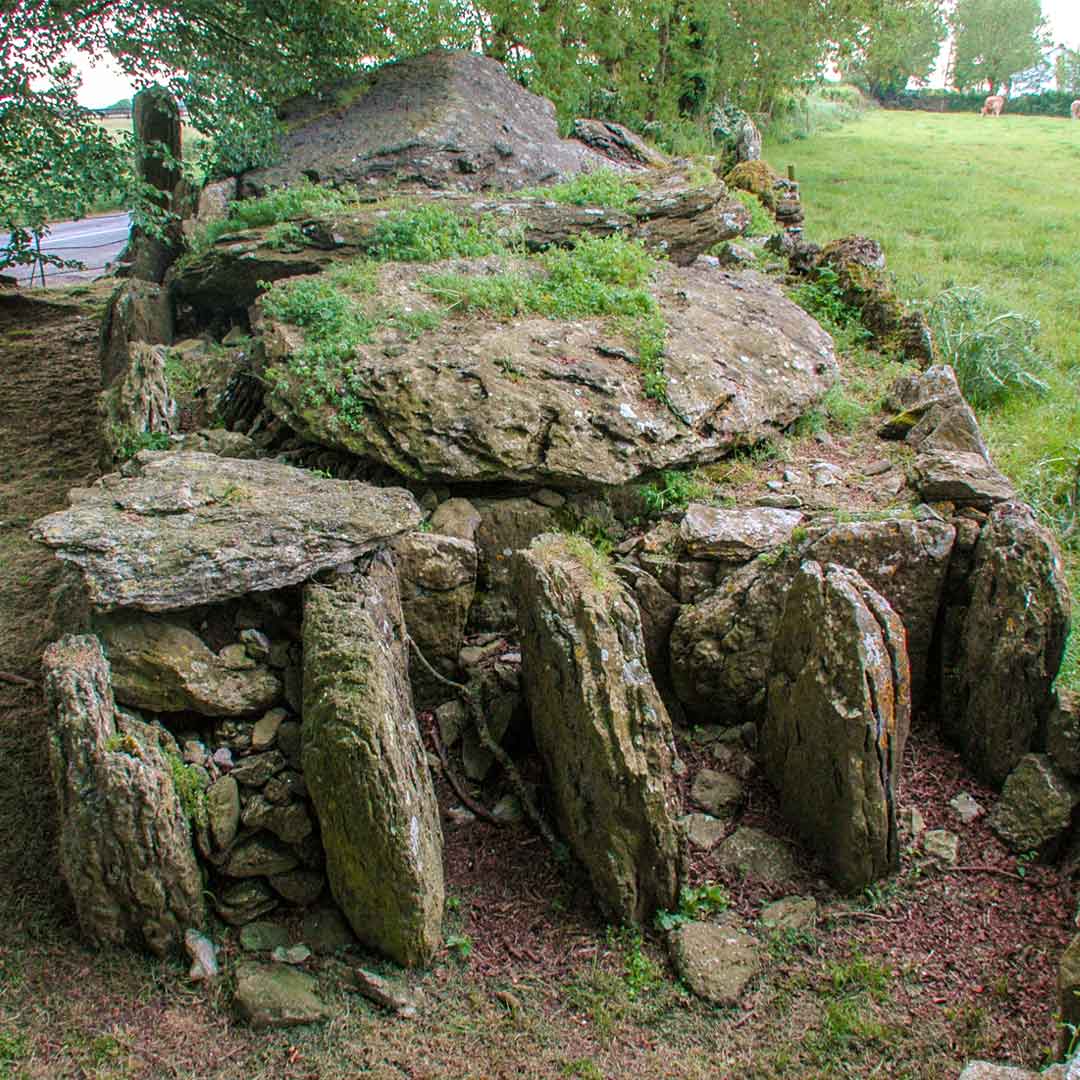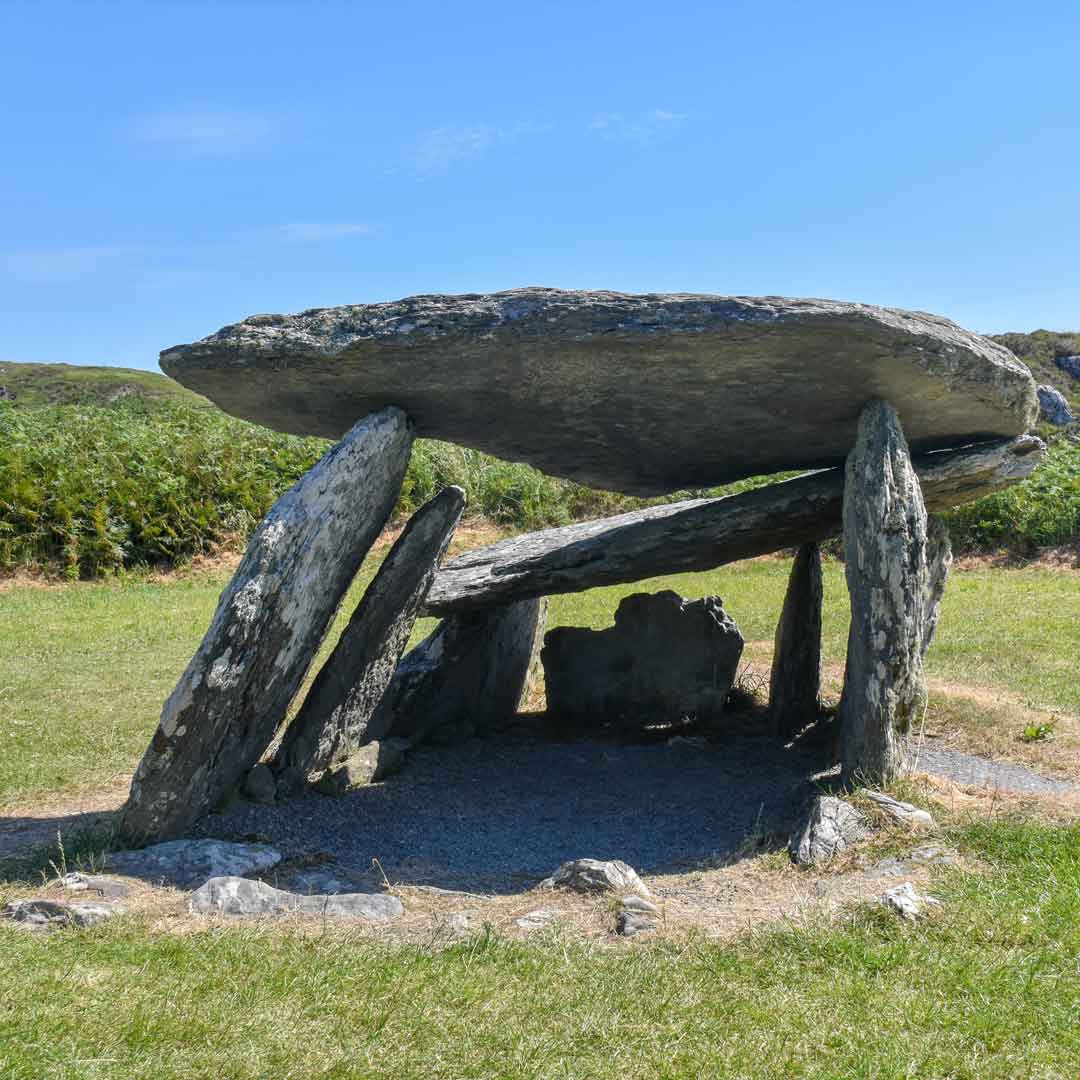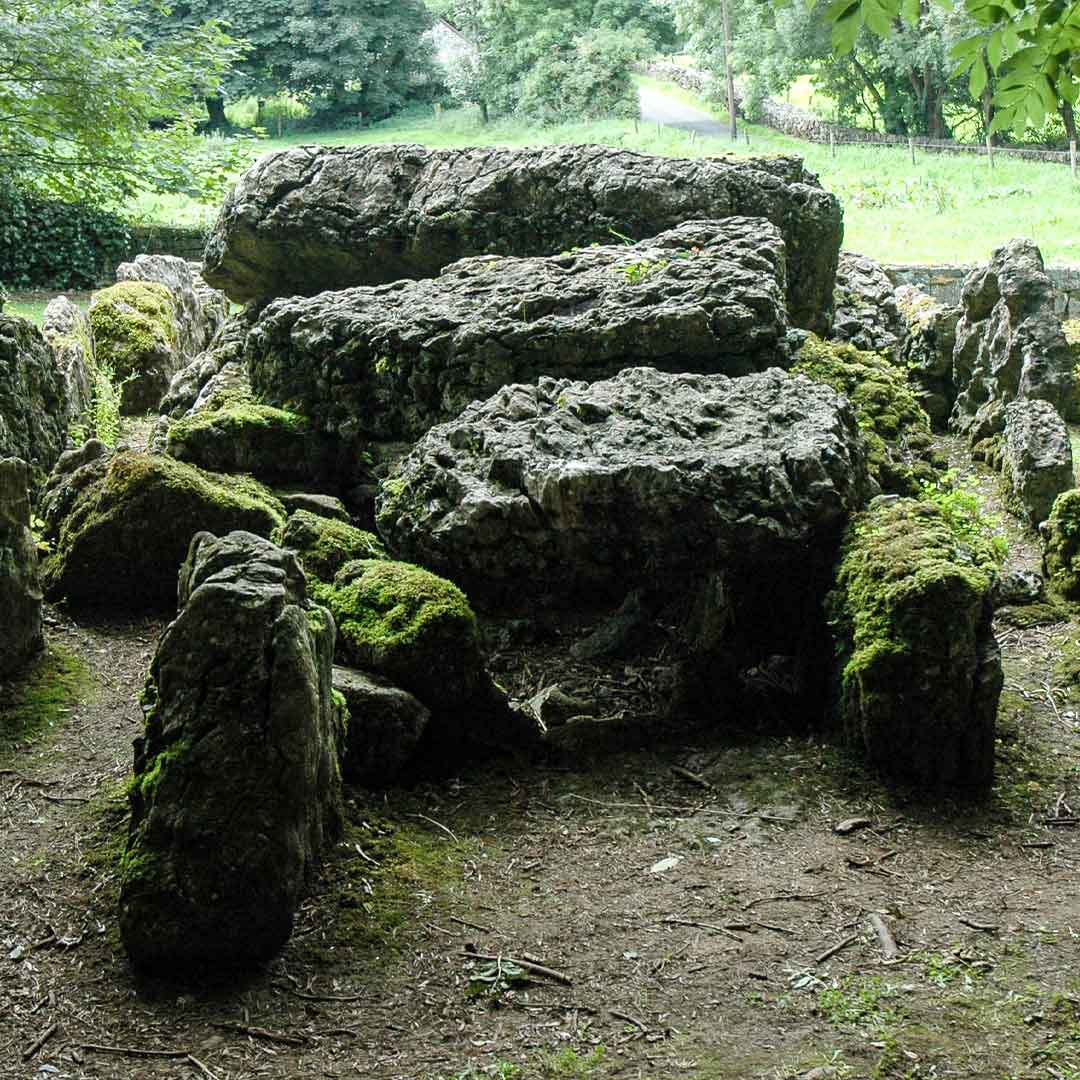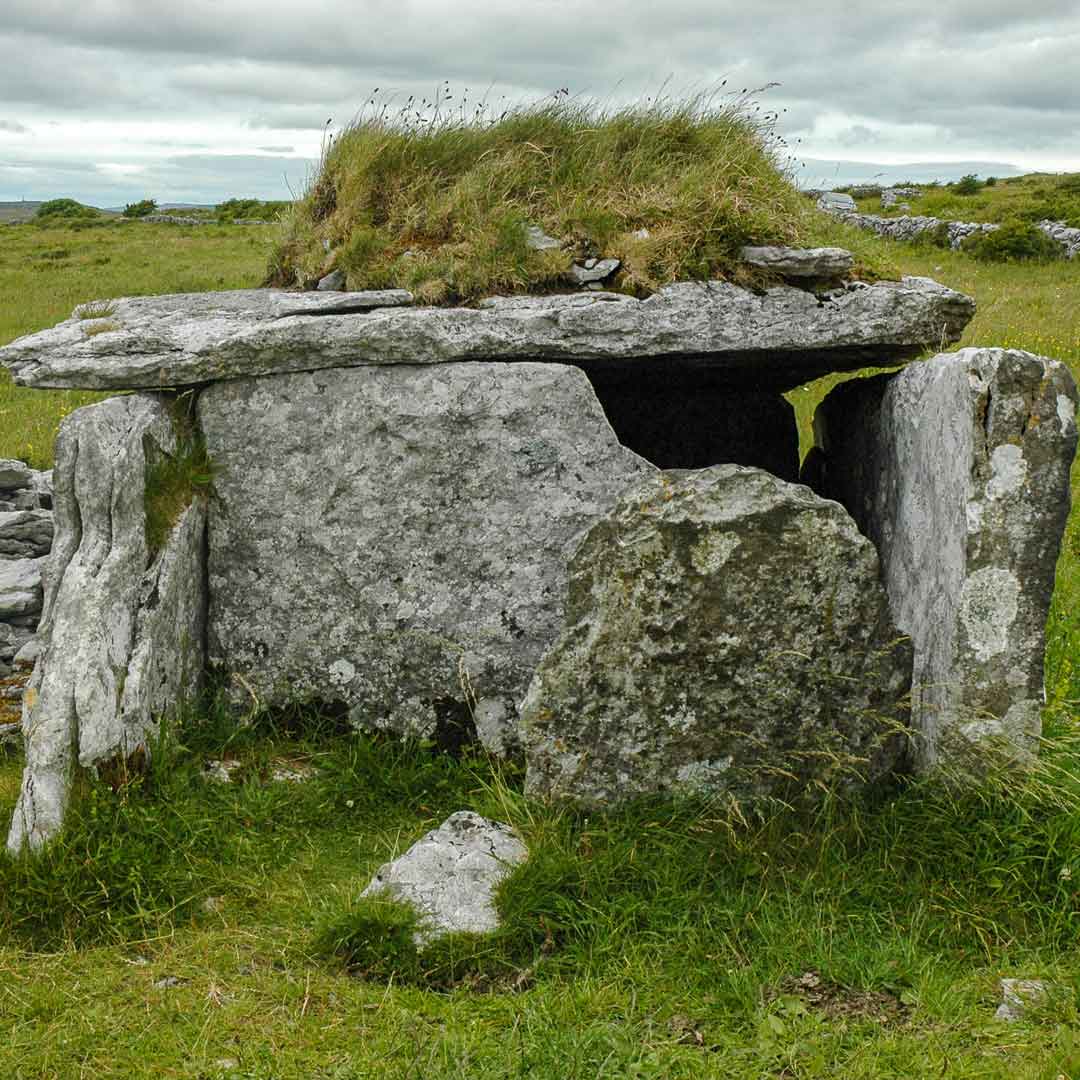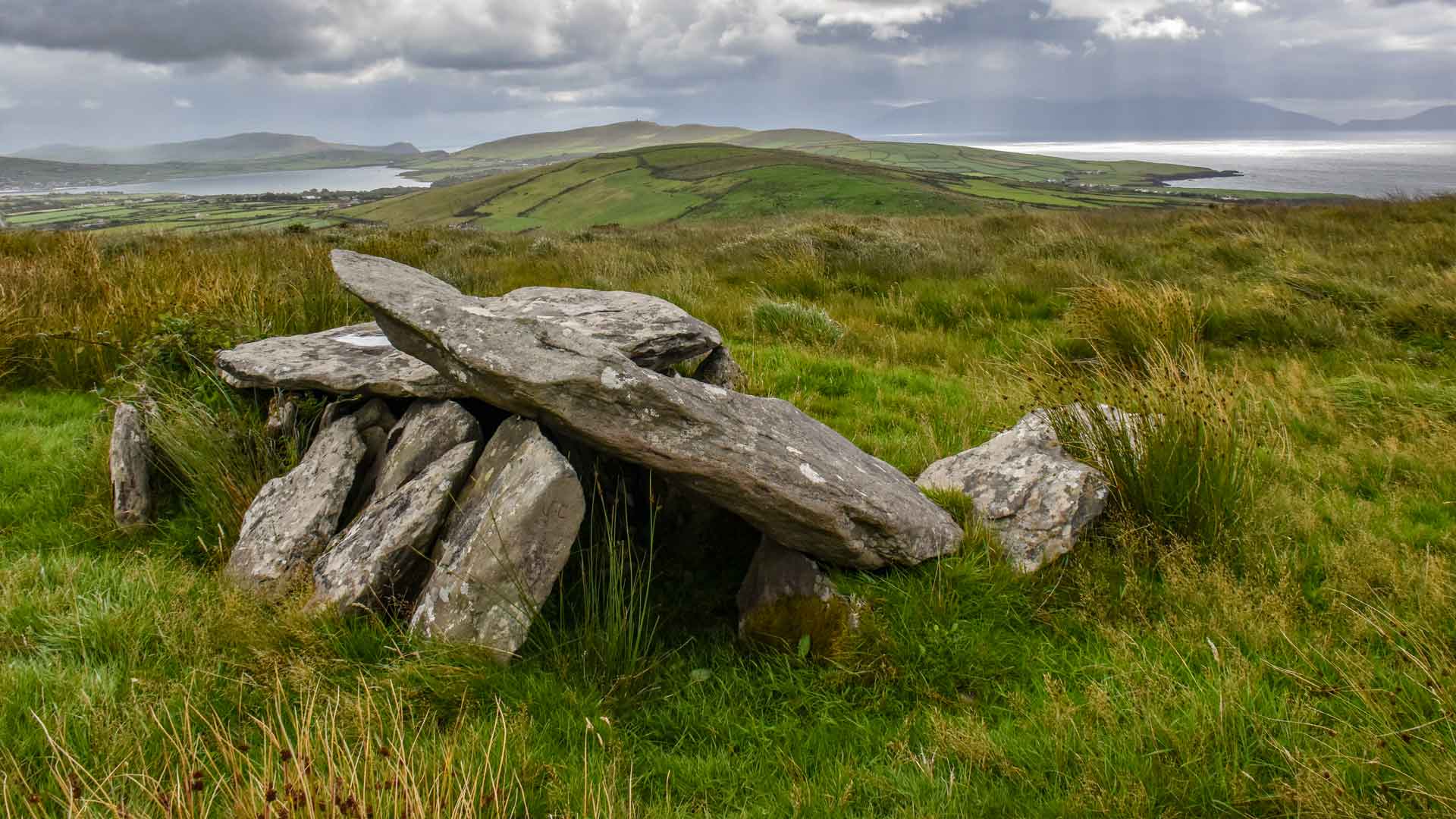
Wedge Tombs
The last phase of megalithic tomb building, is represented by the Wedge Tombs. These are the most common type of megalithic monument in Ireland, with more than 500 known examples, mainly found in the west and southwest.
Wedge Tombs are so named because they are generally broader and higher at the front - which invariably faces a southwesterly direction - and decreases in both in height and width to the rear, producing the wedge shape that gives the monuments their name. As with most of the megalithic monuments, what we see today would may have been covered by round or oval cairns with only the entrance being visible or accessible.
Although Wedge Tombs are the most numerous of the four megalithic tomb types found in Ireland, we are still not exactly sure who built them. Unlike the court, portal and passage tombs which were constructed somewhat concurrently during the early-mid Neolithic in Ireland (c.4000-3000BCE); evidence from the small number of excavated wedge tombs would suggest that they were built between 2,500 and 2,000 BCE; at the beginning of the Irish Bronze-Age (2500-500BCE).
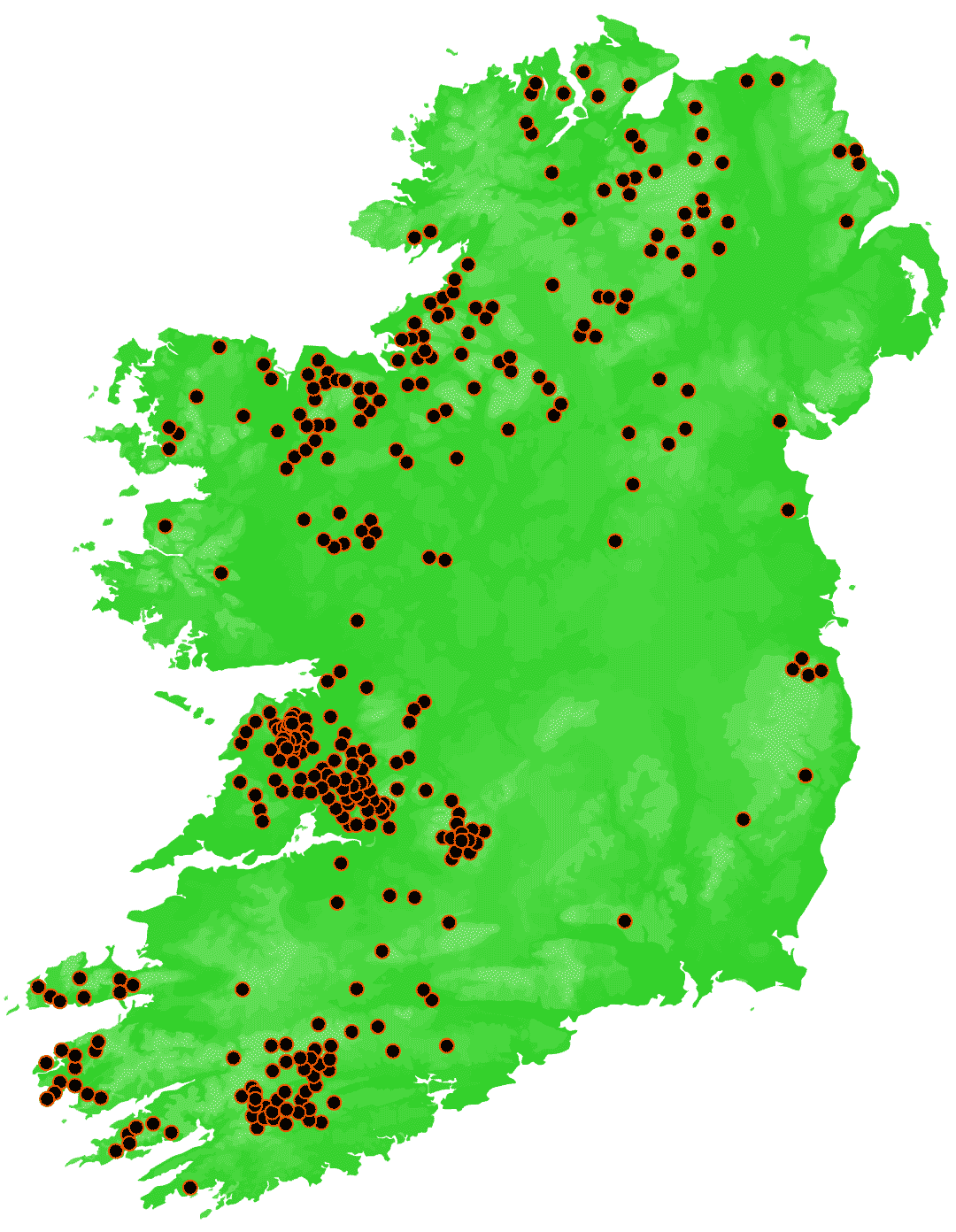
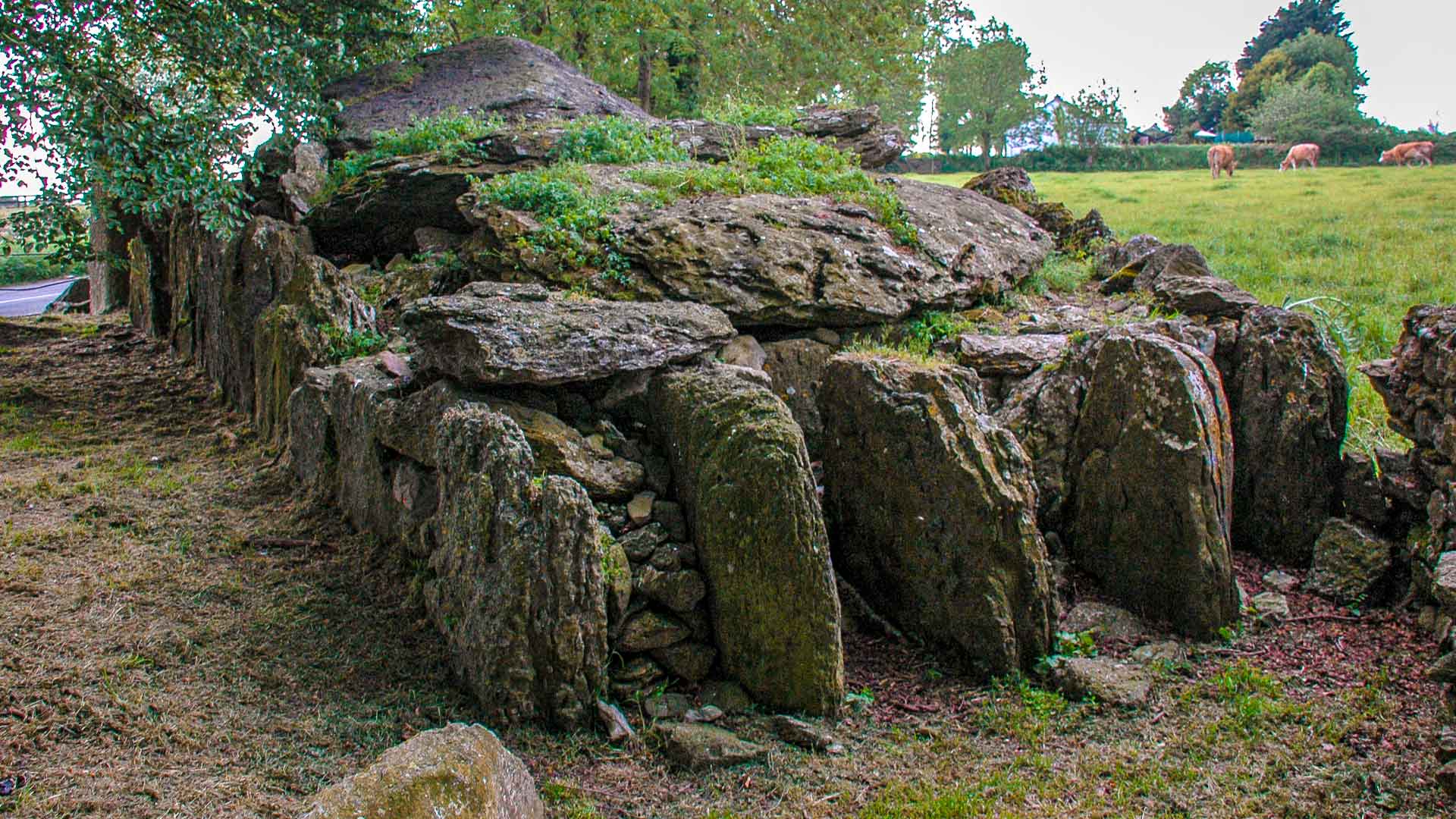
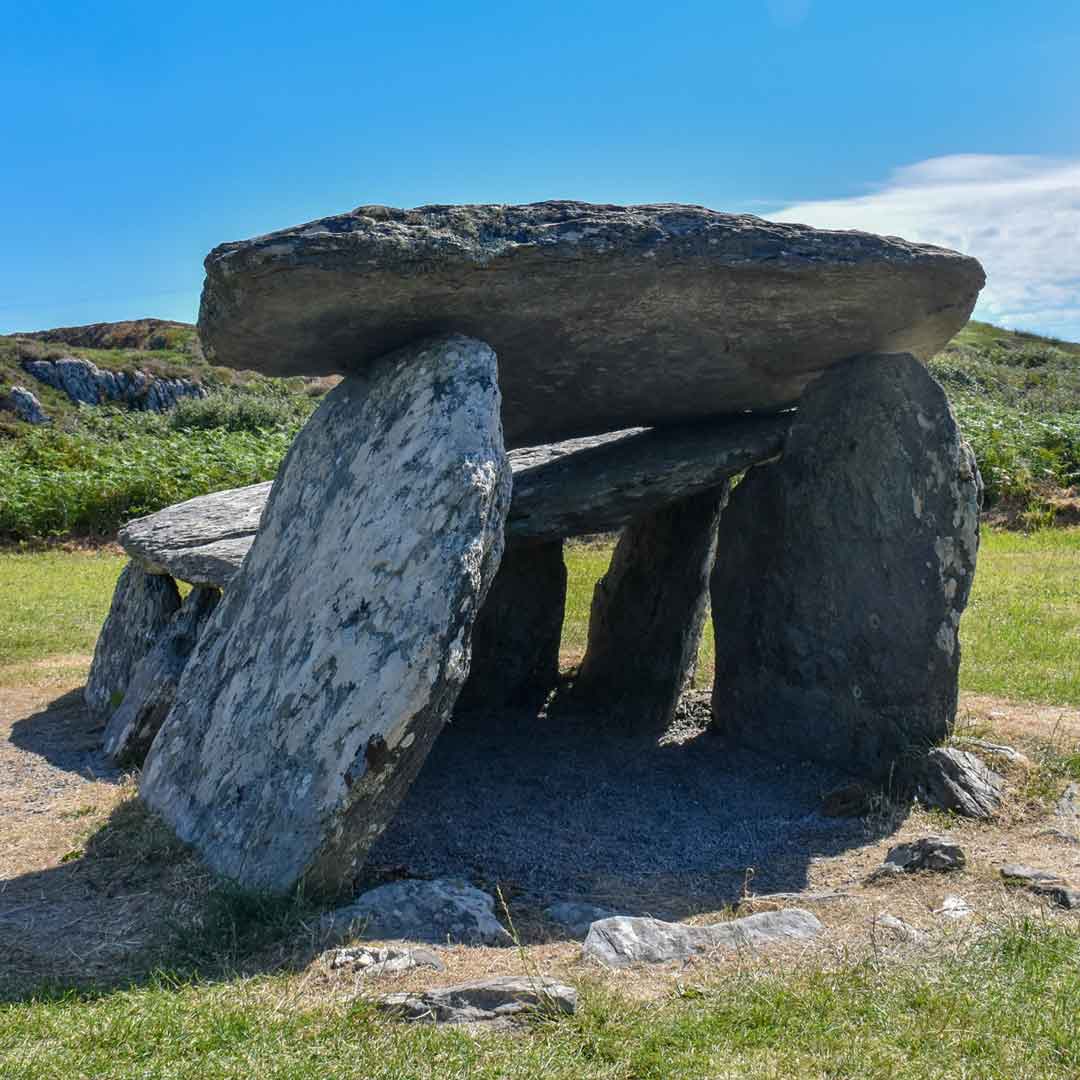
The appearance of wedge-tombs on the Irish landscape coincides with the advent of metallurgy and the arrival of new inhabitants to these shores. These people are generally known as the ‘Bell Beaker’ people, from their distinctive pottery, made in the shape of an inverted bell. Recent genetic studies have shown that over time these Bell-Beaker people replaced the previous Neolithic population and are direct ancestors of the modern Irish.
Some of the earliest Irish examples of Bell-Beaker pottery (dating to 2400BCE) were found at the Ross Island Copper Mine in Co. Kerry - the earliest known copper mine in Britain & Ireland and possibly the whole of northwestern Europe. The Ross Island mine, along with others in the region are examples of large scale metal production in south-west Ireland, resulting in the intensification of agricultural production and human settlement in this region. The large wedge tombs of the southwest are considered to be the earliest of their type and are often associated with the copper mines of the area.

As we follow the stylistic progression of Wedge-Tomb construction to the Burren, Co. Clare - the largest concentration of wedge-tombs in the country; we find much smaller, box like tombs, almost like overground versions of the cists (stone-boxes) that are the predominant feature of later Bronze-Age burials.
Therefore, it is possible that the early Bronze-Age (also known as the Copper-Age or Chalcolithic Period) in Ireland produced a hybrid culture of newly arrived Beaker burial traditions along with the pre-existing Neolithic tradition of megalithic construction.
The last of the megalithic tombs to have been constructed in Ireland was probably one of these Burren-style wedge tombs, constructed some time around 2000BCE; marking the end of the megalithic tomb tradition.
Check out the examples of Wedge Tombs below or click here to view all
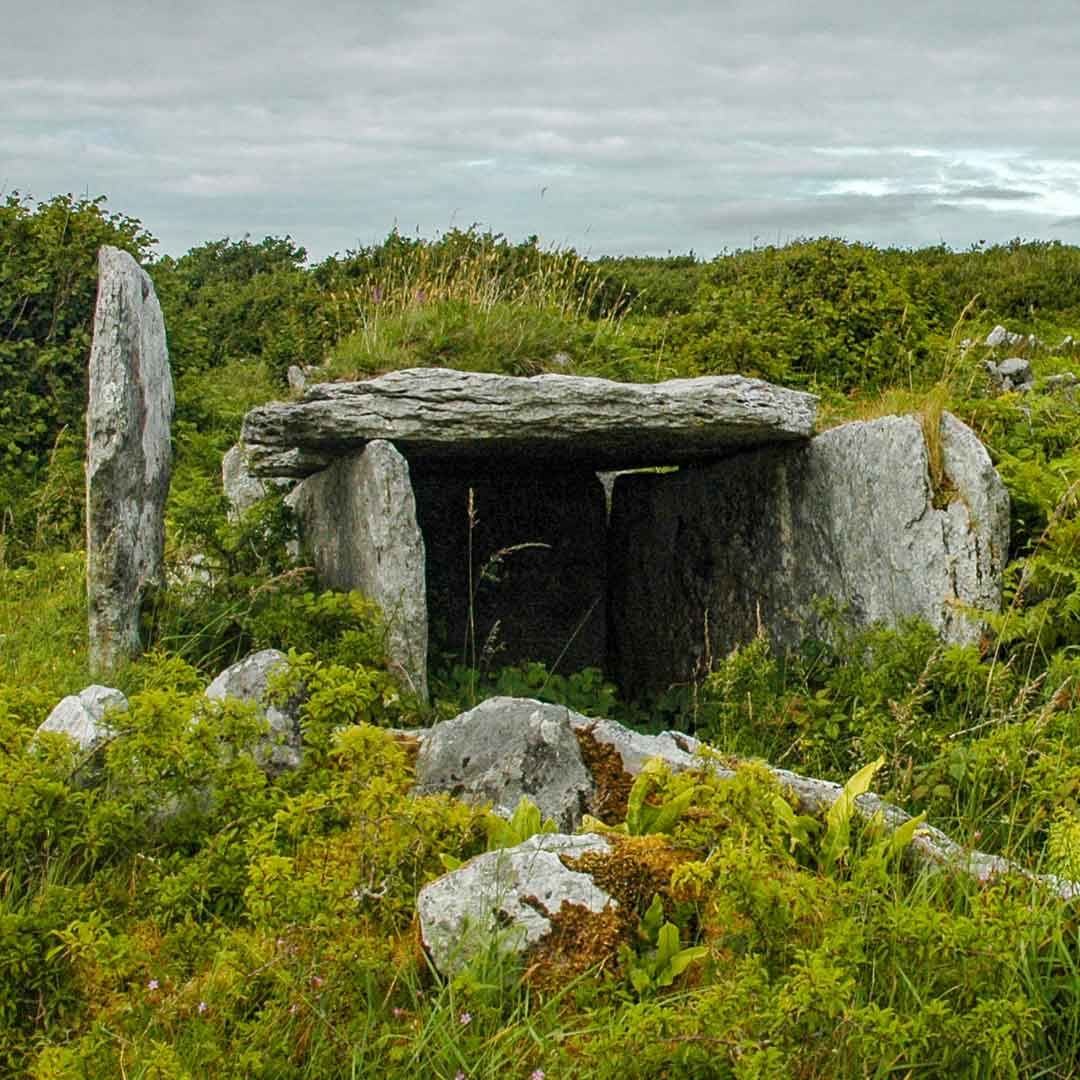
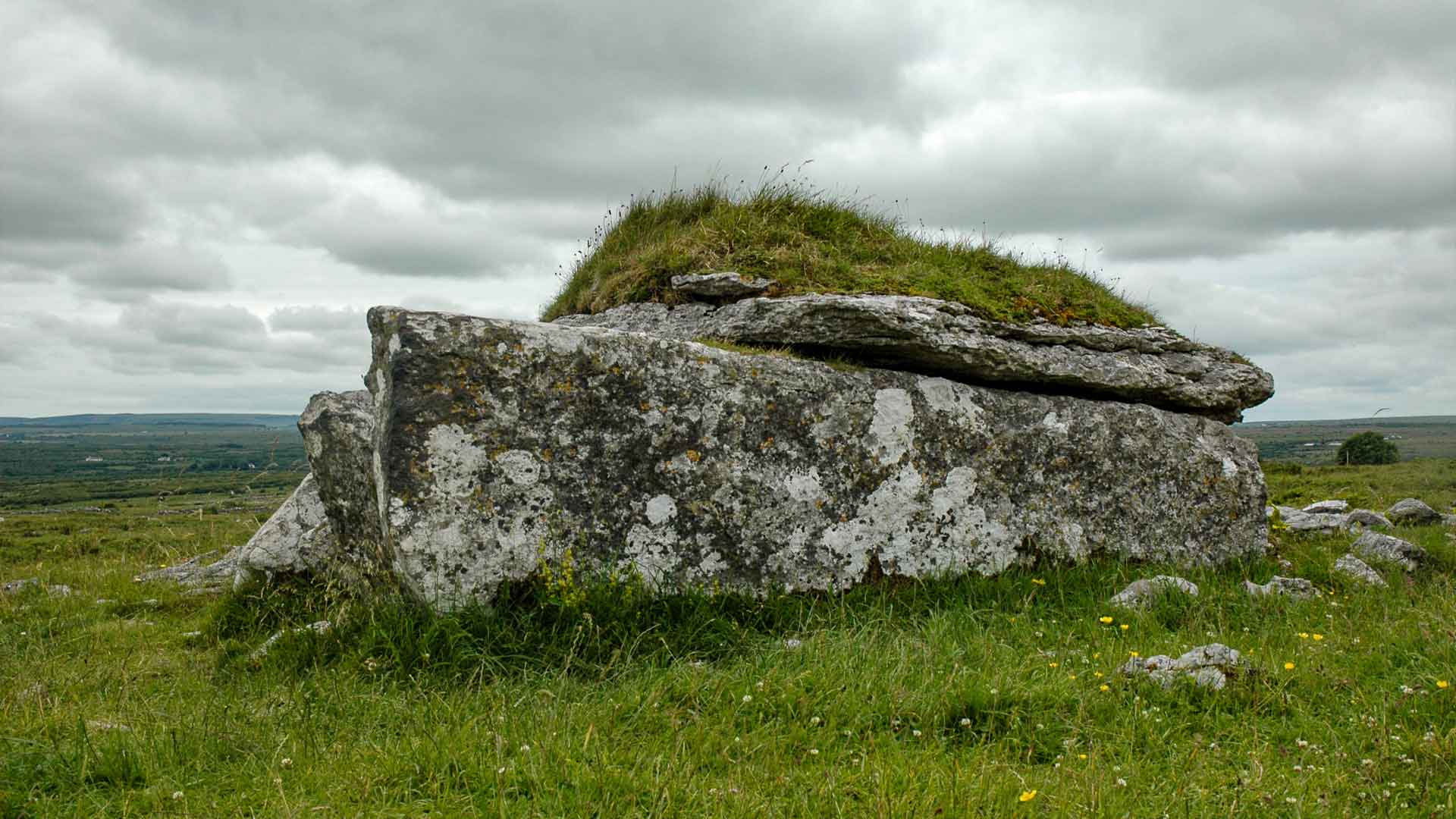
Examples of Wedge Tombs

Wedge Tombs
The last phase of megalithic tomb building, is represented by the Wedge Tombs. These are the most common type of megalithic monument in Ireland, with more than 500 known examples, mainly found in the west and southwest.
Wedge Tombs are so named because they are generally broader and higher at the front - which invariably faces a southwesterly direction - and decreases in both in height and width to the rear, producing the wedge shape that gives the monuments their name. As with most of the megalithic monuments, what we see today would may have been covered by round or oval cairns with only the entrance being visible or accessible.
Although Wedge Tombs are the most numerous of the four megalithic tomb types found in Ireland, we are still not exactly sure who built them. Unlike the court, portal and passage tombs which were constructed somewhat concurrently during the early-mid Neolithic in Ireland (c.4000-3000BCE); evidence from the small number of excavated wedge tombs would suggest that they were built between 2,500 and 2,000 BCE; at the beginning of the Irish Bronze-Age (2500-500BCE).



The appearance of wedge-tombs on the Irish landscape coincides with the advent of metallurgy and the arrival of new inhabitants to these shores. These people are generally known as the ‘Bell Beaker’ people, from their distinctive pottery, made in the shape of an inverted bell. Recent genetic studies have shown that over time these Bell-Beaker people replaced the previous Neolithic population and are direct ancestors of the modern Irish.
Some of the earliest Irish examples of Bell-Beaker pottery (dating to 2400BCE) were found at the Ross Island Copper Mine in Co. Kerry - the earliest known copper mine in Britain & Ireland and possibly the whole of northwestern Europe. The Ross Island mine, along with others in the region are examples of large scale metal production in south-west Ireland, resulting in the intensification of agricultural production and human settlement in this region. The large wedge tombs of the southwest are considered to be the earliest of their type and are often associated with the copper mines of the area.

As we follow the stylistic progression of Wedge-Tomb construction to the Burren, Co. Clare - the largest concentration of wedge-tombs in the country; we find much smaller, box like tombs, almost like overground versions of the cists (stone-boxes) that are the predominant feature of later Bronze-Age burials.
Therefore, it is possible that the early Bronze-Age (also known as the Copper-Age or Chalcolithic Period) in Ireland produced a hybrid culture of newly arrived Beaker burial traditions along with the pre-existing Neolithic tradition of megalithic construction.
The last of the megalithic tombs to have been constructed in Ireland was probably one of these Burren-style wedge tombs, constructed some time around 2000BCE; marking the end of the megalithic tomb tradition.
Check out the examples of Wedge Tombs below or click here to view all


Examples of Wedge Tombs

Wedge Tombs
The last phase of megalithic tomb building, is represented by the Wedge Tombs. These are the most common type of megalithic monument in Ireland, with more than 500 known examples, mainly found in the west and southwest.
Wedge Tombs are so named because they are generally broader and higher at the front - which invariably faces a southwesterly direction - and decreases in both in height and width to the rear, producing the wedge shape that gives the monuments their name. As with most of the megalithic monuments, what we see today would may have been covered by round or oval cairns with only the entrance being visible or accessible.
Although Wedge Tombs are the most numerous of the four megalithic tomb types found in Ireland, we are still not exactly sure who built them. Unlike the court, portal and passage tombs which were constructed somewhat concurrently during the early-mid Neolithic in Ireland (c.4000-3000BCE); evidence from the small number of excavated wedge tombs would suggest that they were built between 2,500 and 2,000 BCE; at the beginning of the Irish Bronze-Age (2500-500BCE).


The appearance of wedge-tombs on the Irish landscape coincides with the advent of metallurgy and the arrival of new inhabitants to these shores. These people are generally known as the ‘Bell Beaker’ people, from their distinctive pottery, made in the shape of an inverted bell. Recent genetic studies have shown that over time these Bell-Beaker people replaced the previous Neolithic population and are direct ancestors of the modern Irish.
Some of the earliest Irish examples of Bell-Beaker pottery (dating to 2400BCE) were found at the Ross Island Copper Mine in Co. Kerry - the earliest known copper mine in Britain & Ireland and possibly the whole of northwestern Europe. The Ross Island mine, along with others in the region are examples of large scale metal production in south-west Ireland, resulting in the intensification of agricultural production and human settlement in this region. The large wedge tombs of the southwest are considered to be the earliest of their type and are often associated with the copper mines of the area.


As we follow the stylistic progression of Wedge-Tomb construction to the Burren, Co. Clare - the largest concentration of wedge-tombs in the country; we find much smaller, box like tombs, almost like overground versions of the cists (stone-boxes) that are the predominant feature of later Bronze-Age burials.
Therefore, it is possible that the early Bronze-Age (also known as the Copper-Age or Chalcolithic Period) in Ireland produced a hybrid culture of newly arrived Beaker burial traditions along with the pre-existing Neolithic tradition of megalithic construction.
The last of the megalithic tombs to have been constructed in Ireland was probably one of these Burren-style wedge tombs, constructed some time around 2000BCE; marking the end of the megalithic tomb tradition.
Check out the examples of Wedge Tombs below or click here to view all



